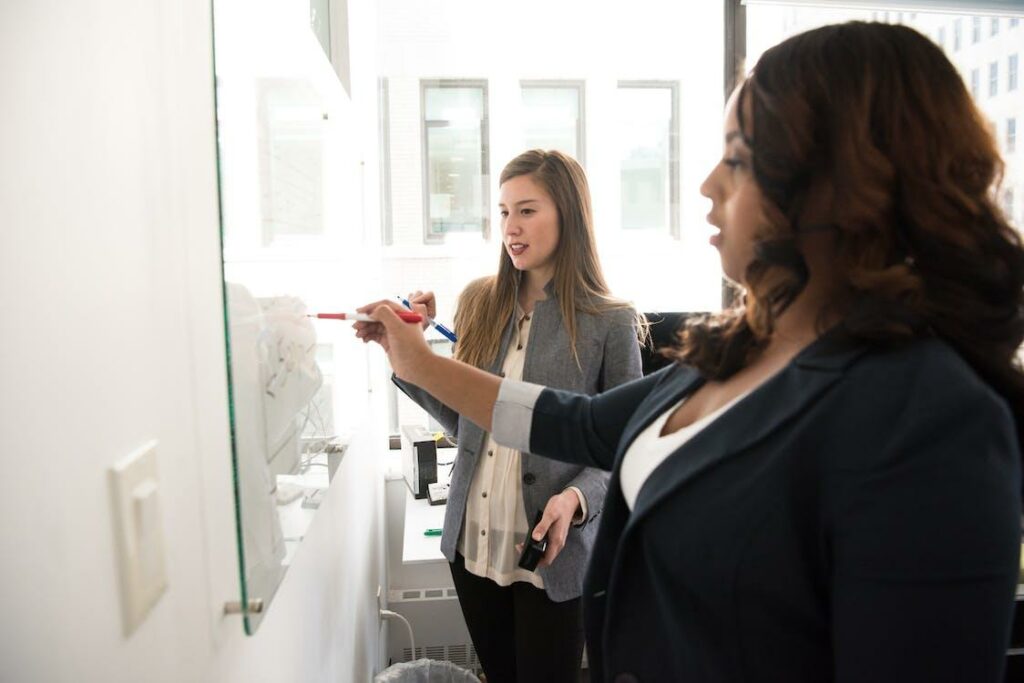In today’s fast-paced world, the ability to generate innovative ideas quickly is a treasured skill. It’s not just about individual brilliance anymore; collective creativity is the order of the day. Enter whiteboard brainstorming – a powerful tool that unifies teams and transforms the way we think. In this post, we’ll explore the art and science of group ideation, focusing on the power of whiteboard brainstorming.

Post Contents
The Benefits of Group Thinking
Unlike traditional methods of individual ideation where one might feel confined within their thoughts, whiteboard brainstorming encourages collaborative input. With a large, blank canvas in front of them, team members can openly share, build upon, and critique ideas.
- Dynamic visual aids: A physical or online whiteboard provides a space where abstract concepts can transform into tangible visual aids. This makes it easier for members to understand and engage with different viewpoints.
- Flexibility and flow: As ideas evolve, a whiteboard allows for modifications, ensuring the brainstorming sessions remain fluid and adaptable.
- Inclusive participation: By ensuring every voice is heard, the whiteboard becomes a democratic space. Everyone, regardless of their position in the company, can make contributions.
Techniques for Effective Whiteboard Brainstorming
The potential of whiteboard brainstorming is vast. However, to unlock its full power, it’s essential to follow some guiding principles.
Establish Clear Objectives
Begin by pinpointing what you want to achieve. Having a clear goal in mind ensures that the brainstorming session remains focused and productive.
Embrace Diversity
Invite people from different departments or backgrounds. Varied perspectives enrich the brainstorming process, providing a well-rounded approach to problem-solving.
Create a Safe Space
Encourage open communication without judgement. This will help create an environment where participants feel comfortable sharing even the most unconventional ideas.
Allocate Time Limits
Time constraints can fuel creativity by preventing overthinking and promoting participants to think quickly and decisively.
Navigating Challenges
Like any method, whiteboard brainstorming has its challenges. Recognizing and addressing them is the key to optimizing the experience.
- Overwhelming information: A flurry of ideas can sometimes clutter the board, making it challenging to prioritize or find connections. To counteract this, try using color-coded markers or grouping related ideas together.
- Dominant voices: In every group, there’s a risk that more assertive individuals will overshadow quieter team members. Periodically prompt those who haven’t spoken to share their thoughts, ensuring a balanced participation.
Beyond the Whiteboard
It’s not just about what happens during the brainstorming session, but also how the harvested ideas are taken forward. Here are some steps to ensure follow-through:
- Documentation: Capture everything. Whether it’s through photos, transcribed notes, or saved in the cloud, ensure that all ideas are saved for reference.
- Prioritization: With your team, determine which ideas have the most potential and create an action plan for implementation.
- Review and reflect: Regularly visit the brainstormed ideas, evaluating their effectiveness and learning from the outcomes.
Whiteboard brainstorming is more than just scribbling ideas on a board – it’s a chance to harness the power of collective creativity. When teams come together in this shared space, the magic starts to happen. Ideas intertwine, multiply, and evolve, leading to solutions that might have remained hidden otherwise.